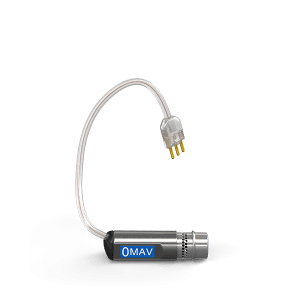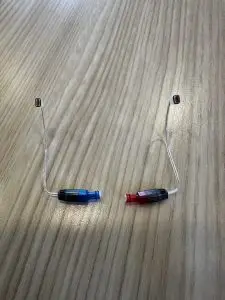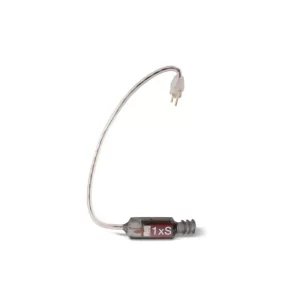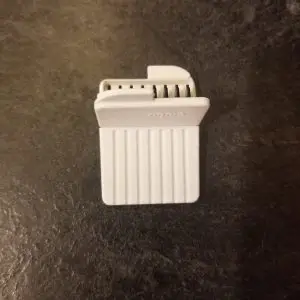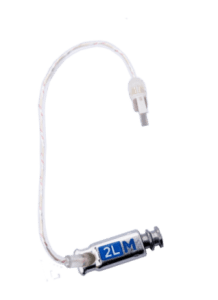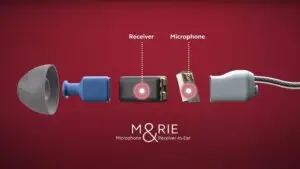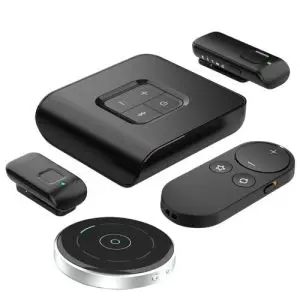Fitting hearing aids involves a comprehensive process:
Individuals often receive a diagnosis of hearing loss and may delay seeking intervention for an extended period. While common studies suggest a waiting period of approximately 7 years, we have observed instances where individuals have deferred addressing hearing loss for as long as 30 years. When one decides to acquire hearing aids and seeks a fitting, careful consideration of specific topics becomes paramount.
It is crucial to recognize that strategies for fitting a hearing aid are highly individualized, and tailored to the unique needs of each person with hearing loss. Factors such as the type of hearing aid fitting, whether earmolds are necessary, and the choice between custom hearing aids, bicros hearing aids, or fittings with a focus on subjective measures only, all play a significant role in the fitting process. Our approach takes into account the diverse requirements and preferences of each individual. Therefore ensuring a personalized and effective solution for managing hearing loss.
Following the selection of a hearing aid, it is advisable to adhere to the following fitting protocol. We recommend conducting a thorough assessment to ensure that the anatomy of the ear canal can effectively accommodate and comfortably hold the selected hearing aid. This assessment extends beyond the physical feel of the fit to encompass considerations of sound comfort. Emphasizing the importance of achieving optimal auditory experiences for the wearer. This approach aims to guarantee both physical comfort and optimal sound perception in the fitting process. Therefore contributing to the overall satisfaction and effectiveness of the chosen hearing aid.
Providers fit a hearing aid to one’s ears by employing various methods and components. These include:
Domes For Fitting Hearing Aids:
Domes are small, soft pieces that attach to the end of the hearing aid receiver or tubing. They are often used for open-fit or receiver-in-canal (RIC) hearing aids.
Domes for receiver-in-canal (RIC) hearing aids are available in various sizes to accommodate different ear canal shapes and sizes. These include small, medium, and large sizes suitable for various preferences and ear canal dimensions. Open domes are designed to allow natural sounds to enter. Power domes on the other hand are tailored for individuals with more severe hearing loss. Tulip domes offer a secure fit without a full earmold. Double domes provide enhanced sound control for specific hearing profiles. The availability of dome sizes may vary by manufacturer, and professionals assess individual ear canal characteristics to recommend the most suitable option for optimal comfort and performance.
Receivers Used to Fit Hearing Aids:
Receivers, also known as speaker wires, deliver sound from the hearing aid to the ear canal. They come in different power levels to accommodate varying degrees of hearing loss.
There are different types of receivers available to fit hearing aids, catering to varying degrees of hearing loss. Here’s an overview of the main types:
Standard Receivers: Standard receivers are suitable for individuals with mild to moderate hearing loss. They provide a sufficient level of amplification for those with less severe hearing impairments.
Moderate Receivers: Moderate receivers are designed for individuals with moderate to moderately severe hearing loss. They offer increased amplification compared to standard receivers, accommodating a broader range of hearing needs.
Power Receivers: Power receivers are specifically engineered for individuals with severe to profound hearing loss. These receivers deliver higher amplification levels to address more significant hearing challenges. Therefore ensuring improved audibility for those with substantial hearing impairments.
The choice of fitting the receiver depends on the individual’s audiogram, which indicates the degree and type of hearing loss across different frequencies. Hearing care professionals use this information to recommend the most suitable receiver type for optimal hearing aid performance.
Earmolds for Fitting Hearing aids:
Earmolds are custom-made pieces that fit into the ear canal. They can be made from various materials, such as acrylic or silicone, and are designed to ensure a secure and comfortable fit. It is important to fit the hearing aid with the correct earmold. Here is a lists of types of earmolds.
Standard Earmolds: Commonly used for behind-the-ear (BTE) hearing aids, custom-fit to the shape of the ear canal.
Skeleton Earmolds: Thinner design for a discreet appearance while maintaining a customized fit.
Canal Lock Earmolds: Feature an extension into the bony part of the ear canal for added stability, suitable for active individuals.
Swim Molds: Designed to prevent water from entering the ear canal, ideal for water activities.
Ventilated Earmolds: Include vents for air passage, reducing the occlusion effect and providing a more natural sound perception.
Acoustic Filter Earmolds: Incorporate acoustic filters to modify frequency response for enhanced comfort and sound quality.
Full Shell Earmolds: Fill most of the concha for increased amplification, suitable for more severe hearing loss.
Half Shell Earmolds: Cover a portion of the concha, balancing amplification with a discreet appearance.
Custom Canal Earmolds: Provide a tailored fit within the ear canal, offering comfort and minimizing visibility.
BTE Earmolds: Specifically designed for behind-the-ear (BTE) hearing aids, ensuring a secure fit and optimal sound transmission.
The choice of earmold to fit on the hearing aid depends on factors such as individual hearing needs, lifestyle, and the type of hearing aid in use. Professional assessment by a hearing care provider is essential for recommending the most suitable earmold type based on these considerations.
Impressions for Fitting Hearing Aids:
Impressions involve creating a mold of the ear canal to ensure a customized fit for hearing aids. When earmolds or custom-fit devices are necessary, the process involves taking impressions.
When audiologists take ear impressions, they prioritize patient comfort, consider the unique shape and size of the ear canal, select suitable materials for the impression, and provide clear instructions to ensure an accurate fit for hearing aids or custom earmolds. They also take into account the patient’s specific hearing needs, lifestyle, and preferences, using diagnostic information to tailor the process. This personalized approach, along with follow-up appointments for verification, ensures that the final product is comfortable and effectively meets individual requirements. Examples of their considerations include selecting materials for comfort, accounting for lifestyle, and ensuring accurate impressions for optimal results.
BiCROS Hearing Aids:
Bicros (bilateral microphone) hearing aids are designed for individuals with hearing loss in one ear and better hearing in the other. They consist of a microphone on the impaired side and a receiver on the better-hearing side.
Custom Hearing Aids:
Some people prefer custom hearing aids because, in this context, “custom” means individually crafting the devices based on precise ear impressions. This individualized tailored fit ensures enhanced comfort and optimizes hearing performance for the specific needs of the wearer.
Open-Fitting:
Open-fit hearing aids leave the ear canal open, allowing natural sounds to enter. They typically use small domes or tips to hold the hearing aid in place.
Thin Tubes Fittings:
Some hearing aids use thin tubes to deliver sound into the ear canal. Based on individual preferences and hearing needs, one can pair these tubes with earmolds or domes.
Follow-Ups are also Important:
The fitting method chosen depends on factors such as the individual’s hearing profile, lifestyle, and personal preferences. Professionals carefully consider these elements to ensure that the selected method provides both optimal hearing enhancement and wearer comfort. Staying updated on the latest hearing aid technologies, we tailor choices to individual needs, incorporating features like noise reduction and Bluetooth connectivity. Expert programming and adjustments using manufacturer-specific software are integral to meeting individual preferences.
Real-ear measurement techniques verify that the amplification settings fitted to the client match that particular individual’s hearing needs. Effective counseling and communication manage expectations, address concerns, and guide care and maintenance.
Methods like speech mapping ensure that the hearing aids perform as intended and are properly fit. Regular follow-up appointments prioritize addressing issues, making adjustments, and ensuring ongoing satisfaction. Fine-tuning is part of our commitment to personalized care.
After Fitting the Hearing aid is also Important:
Educating users on hearing aid usage, including proper insertion, battery replacement, cleaning, and troubleshooting, is crucial. Tailoring to lifestyle needs involves considering specific requirements, such as water resistance for active individuals.
Fitting hearing aids involves a meticulous process encompassing personalized ear impressions and the selection of components tailored to individual needs. This comprehensive guide explores the nuances of this process, ensuring a snug fit for optimal comfort and performance. From understanding the intricacies of ear anatomy to choosing suitable receivers, domes, or earmolds, the aim is to provide a customized hearing solution. This attention to detail enhances user satisfaction, making the journey towards improved hearing both effective and comfortable.
Our dedication to staying informed and continuously improving in fitting hearing aids reflects our commitment to providing personalized and patient-centered care.


